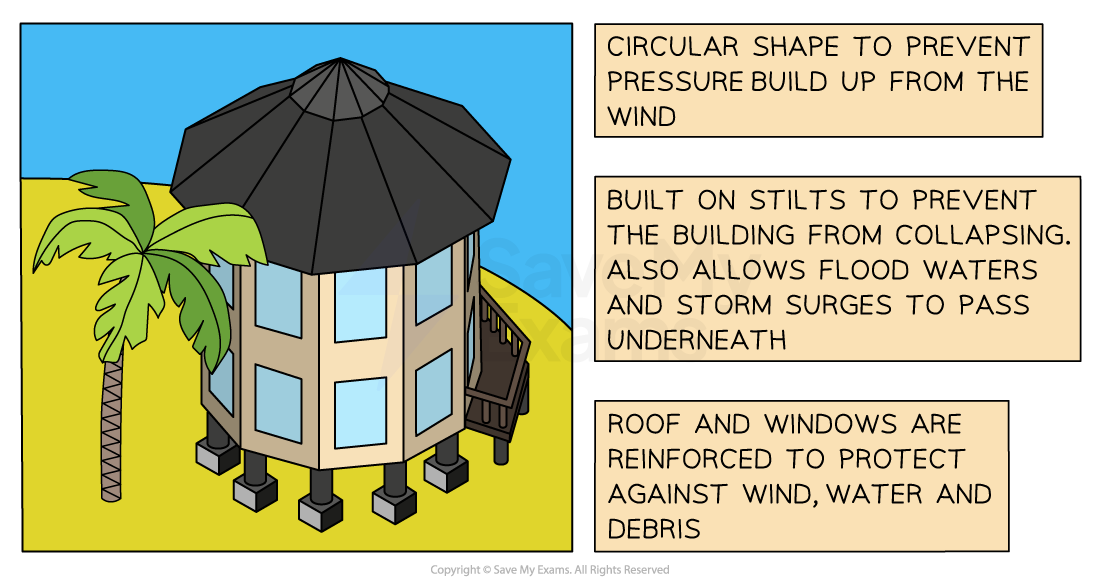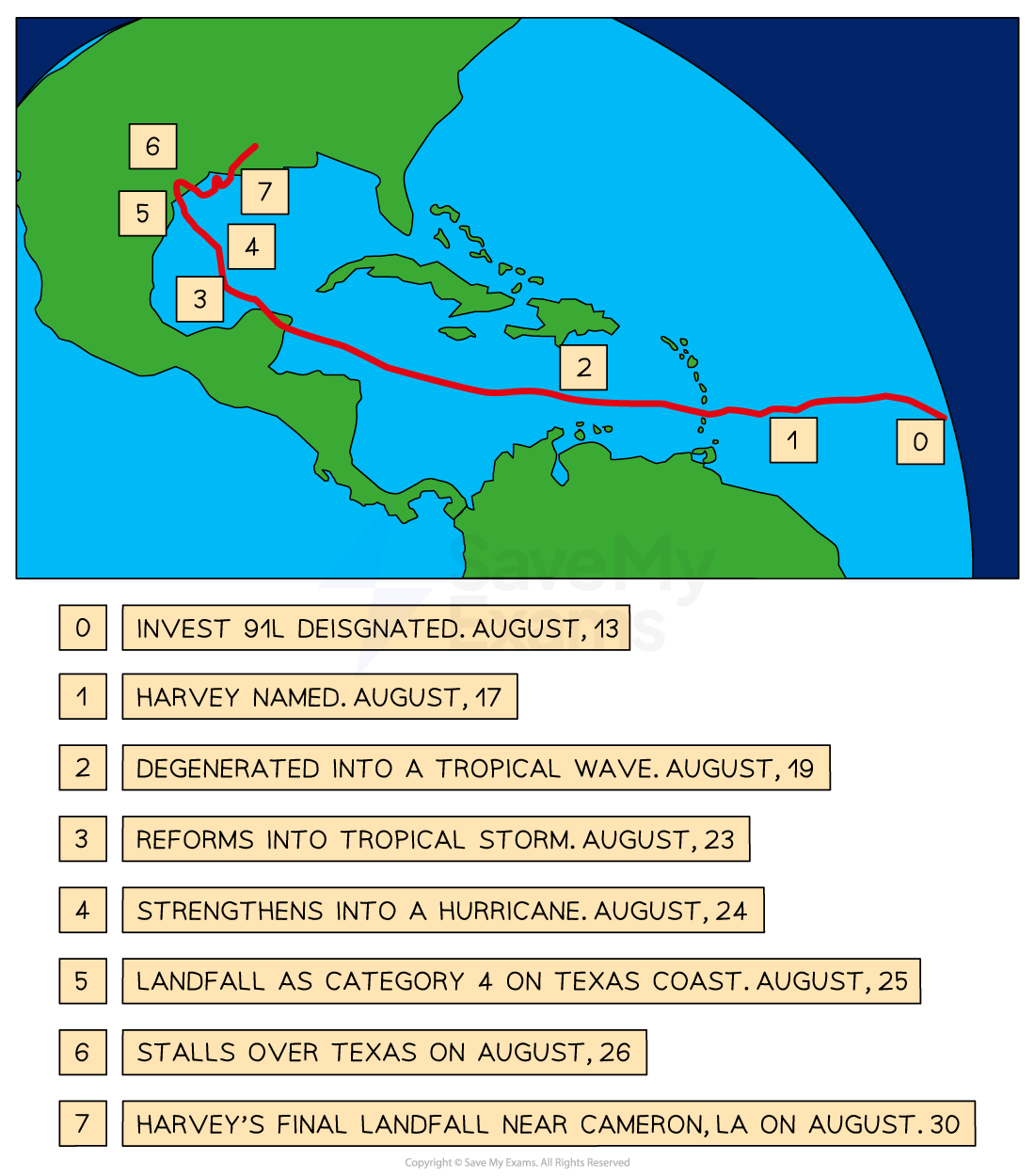Impacts of Storm Hazards
Primary & Secondary Effects
- Primary effects are the immediate impacts of strong winds, high rainfall and storm surges
- Secondary effects are the impacts that occur later on after the storm has passed
The Primary and Secondary Impacts of Tropical Storms
|
|
Primary impacts | Secondary impacts |
|
Social |
Deaths and injuries Displacement of people Damage to properties and infrastructure causing disruption to people’s lives
|
Mental health issues e.g. stress, anxiety, depression Homelessness Disruption to services such as healthcare and education Loss of cultural heritage sites |
|
Economic |
Destruction of property and infrastructure leading to significant costs for repair and reconstruction Disruption of trade and economic activity Loss of income and employment Costs of immediate responses e.g. food aid, temporary shelter, medical treatment |
Slower economic growth and development Increased economic inequality as impacts are more severe for most vulnerable people Increased costs of insurance and hazard management strategies |
|
Environmental |
Poor water quality due to pollution Loss of biodiversity as freshwater habitats are inundated with salt water Destruction of habitats and ecosystems e.g salt marshes, sand dunes, mangrove forests and coral reefs
|
Soil erosion and land degradation leads to decreased soil fertility which can lead to a loss of productivity of crops Loss of habitat and biodiversity can affect other species such as migratory birds Loss of coral reefs, sand dunes, mangrove forests and salt marshes can leave coastline more exposed to erosion and flooding in the long-term |
|
Political |
Pressure on governments to co-ordinate emergency response Social unrest and political instability |
Conflicts over government response and food shortage Changes in government policy and regulations to reduce future risk |





